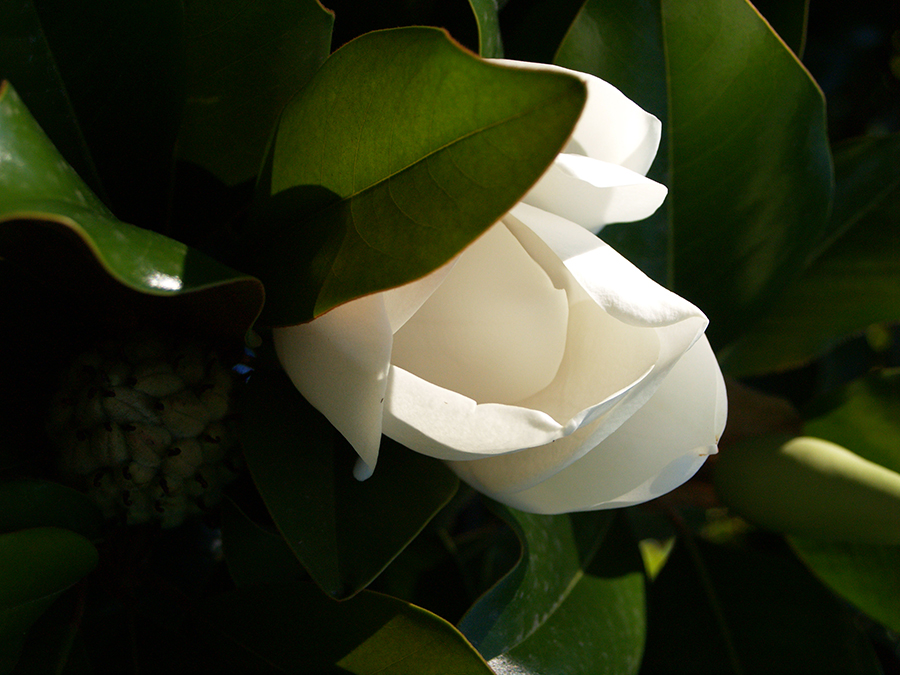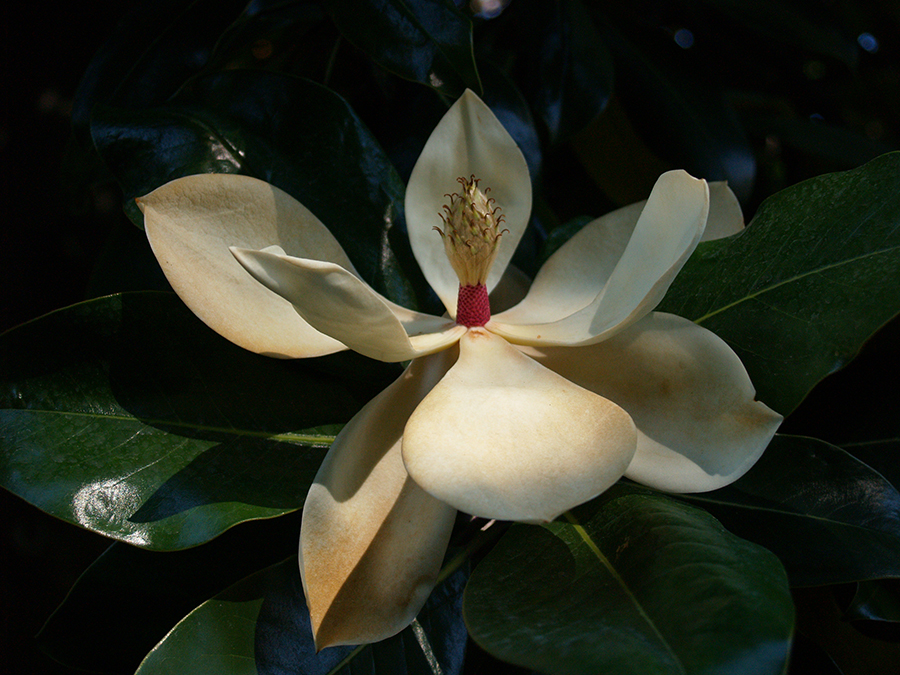
Magnolia
Magnolia grandiflora
Family and description
Member of the Magnoliaceae family, the Magnolia is a large persistent tree that can reach 20 to 25m in height. It has a smooth grey trunk and young, brown to orange, branches. Its leaves are large, 10 to 25 cm long, leathery and bright dark green in colour. Its flowers are white, hermaphroditic, large, showy and fragrant. They bloom on their own at the tips of branches in late spring. The fruit is made up of brown follicles, resembling an ovoid pinecone with each follicle housing a bright red seed.
Origin and habitat
Originating in North America, it is widely used as an ornamental plant in Europe although it does not exist spontaneously here. It requires good quality, non-limestone and deep soils.
It demands plenty irrigation but does not tolerate root waterlogging.
It prefers areas that are not exposed to direct sunlight.
Uses and curiosities
There are numerous cultivars of magnolia, namely deciduous, which are very popular in gardening due to their intense flowering. The genus is named after Pierre Magnol, an 18th century French botanist who was the director of the Montpellier Botanical Garden. It is most likely that the first flowering plants to appear in the history of the planet resembled the current Magnolias, since the oldest known types of flower fossils have structures very similar to those of this botanical genus. It reproduces well by seed and in its original habitat, is disseminated by birds and mammals.



